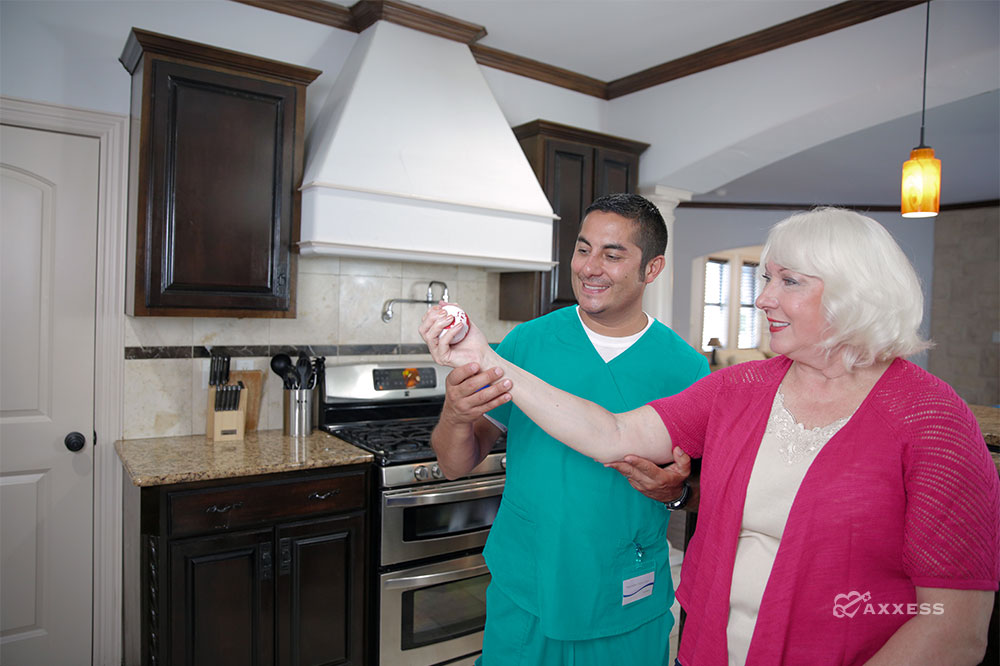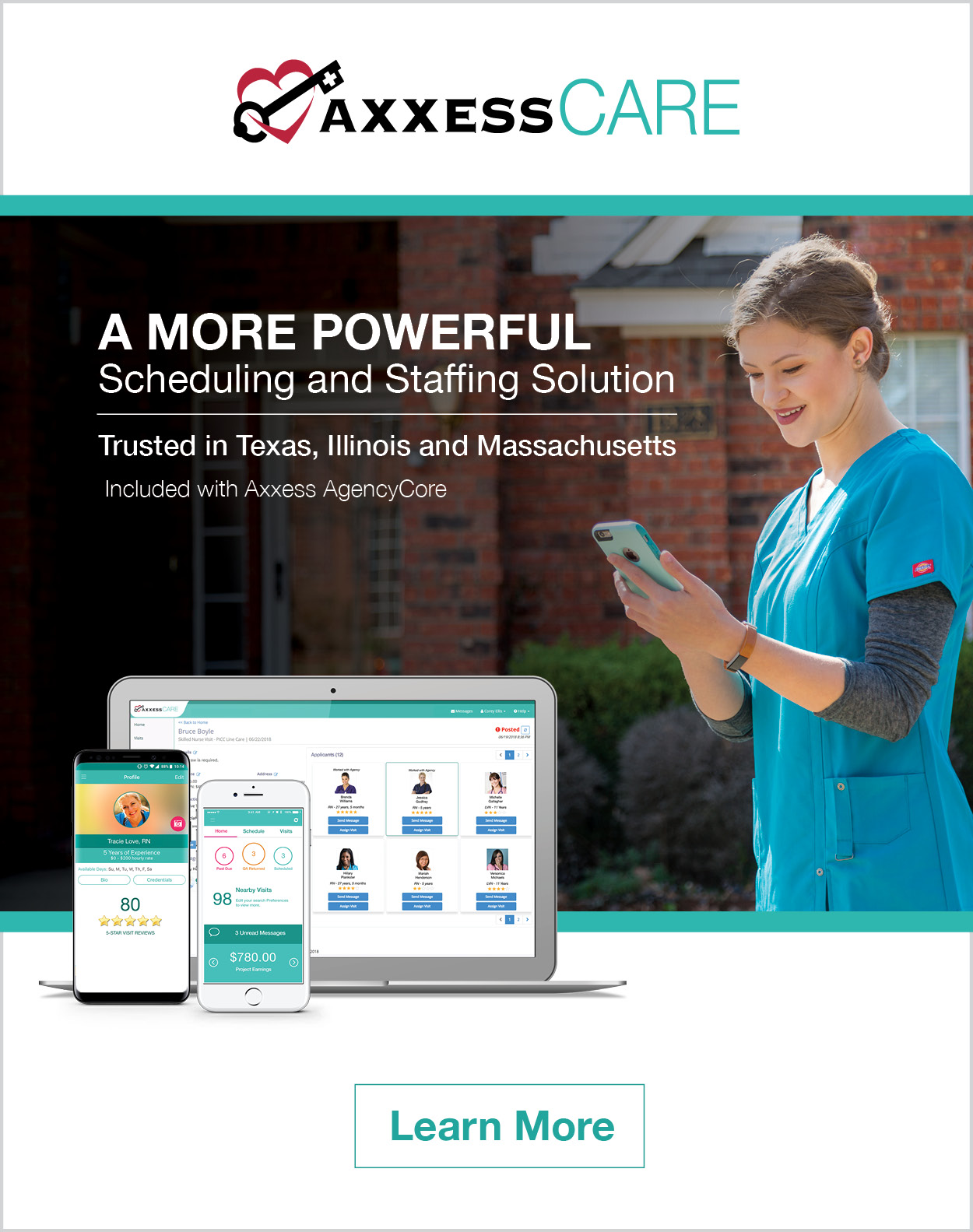
The Patient-Driven Groupings Model (PDGM) is a defining opportunity for the role of therapy in transitioning from volume to value in the home healthcare industry. The physiology of the geriatric patient doesn’t change January 1, 2020. The thing that will change is how we define, report and deliver care, and are reimbursed for the help we provide.
Value-Based Therapy
As our industry continues to shift to focus on value over volume, the budget neutral payment shift of PDGM removes incentives for agencies to over-provide therapy services. The PDGM model is designed to closely align payment with patient clinical characteristics and needs. The focus of therapists and the industry must remain on delivering evidence-based quality care with appropriate utilization, resulting in optimal patient outcomes and stellar patient satisfaction.
The Medicare Home Health Conditions of Participation require agencies to provide comprehensive care to address the patient’s needs, especially independently accomplishing tasks and routine activities. Therapy in home healthcare as we know it today may change but it will continue to play a significant role in determining the PDGM Functional Impairment Level and achieving optimal patient outcomes.
It is extremely likely that fewer therapy visits will ultimately be provided in most, if not all, agencies under the PDGM model. This may change therapy staffing ratios, but we caution agencies against considering radical cuts to therapy visit volume and staff without careful and detailed analysis of current therapy utilization and outcomes. Ideally, agencies that have been providing the appropriate level of therapy to maximize patient function, rather than being concerned with PPS reimbursement, will show minimal changes. In the process of preparing to transition to PDGM, it is important to understand your current therapy utilization and productivity to make appropriate management changes going forward.
PDGM Therapy Expertise
The expertise of the therapist will be vital as the clinical staff accurately completes the OASIS. To make this easier, allow for collaboration among clinical staff so that agencies are more successful. The accurate assessment and depiction of a patient’s functional limitations and risks for hospitalization will make a significant difference in the PDGM reimbursement.
Each OASIS assessment that generates reimbursement (SOC, ROC, and Recert) will be categorized as having low, medium, or high functional impairment. This determination will be based upon eight key OASIS items (M1800, M1810, M1820, M1830, M1840, M1850, M1860, and M1033). Please note that M1800 (Grooming) and M1033 (Risk for Hospitalization) are now items that contribute to the functional picture. The addition of these two OASIS items is no surprise, as one of the leading causes of hospital readmission is falls. Falls most often occur while patients are performing Activities of Daily Living (ADLs).
Just like PPS, the points gathered for these OASIS responses will determine the Functional Impairment Level in the PDGM model. The points needed to progress between levels will vary based upon the Clinical Grouping. A thorough assessment of the patient’s functional status is key in the foundation of the comprehensive care plan, appropriate episode reimbursement, and most appropriate utilization of services to address the patient deficits.
Determining Functional Status
An accurate, comprehensive assessment requires several things to be completed. There must be observation of the patient completing the eight OASIS function task items. The therapist must also interview the patient and the caregiver to understand daily movement patterns and how often tasks are completed. It is also important to have collaboration in an interdisciplinary approach with the other clinicians providing skilled intervention to the patient.
The key element frequently missed in the scoring of the Functional OASIS items is the patient’s safety in performing these tasks. As we observe a patient ambulating with their walker, therapists must consider how often the patient demonstrated unsteadiness, slowed their cadence, or stopped to center their balance on both even and uneven surfaces. This information is necessary to properly score the OASIS. The skilled eye of a therapist to accurately define patient deficiencies is the foundation of a successful functional outcome.
Agencies inevitably will continue to adapt their practices to survive in the ever-changing home health reimbursement system. The impact on therapy and therapists when considered in a vacuum may seem initially negative, but an objective observer would likely note that the tables have been unfairly tilted in favor of therapists for many years. This recentralization of reimbursement is appropriate and perhaps overdue. Therapists will need to continue to work hard to demonstrate their worth to their agencies, patients, and referral sources; remember that the goal is to do what is best for our patients.
The increased focus on 5-star ratings and Value-Based Purchasing means that agencies must remember that patient improvement and satisfaction are essential to success. High-quality therapy services are instrumental to these scores. It would not be at all surprising to see agencies strategically optimize the utilization of nurses and home health aides to assist the therapy staff with improving the patient’s function, mobility, and safety.
A Successful PDGM Transition
It is critical to support our clinicians through the transition to PDGM. Axxess has created resources to prepare agencies and clinicians for the transition to PDGM. Empower your teams with deep knowledge of OASIS-D to ensure their accuracy in scoring these items. Establish a strong foundation and process for interdisciplinary communication for clinicians to share assessment findings and develop the best evidence-based intervention plan, optimizing the resources of all members of the team for the most appropriate utilization and optimal patient outcome. Keep focused on value over volume and avoid drastic practice pattern changes.
Axxess is a partner helping providers on the journey to PDGM success. We have created a wide variety of resources to help providers understand the new regulations, including on-demand webinars, web articles, and quick reference guides. We are also incorporating features into our software to help our clients understand the impact of PDGM on the clinical, operational, and financial process and provide suggestions for improvement.

